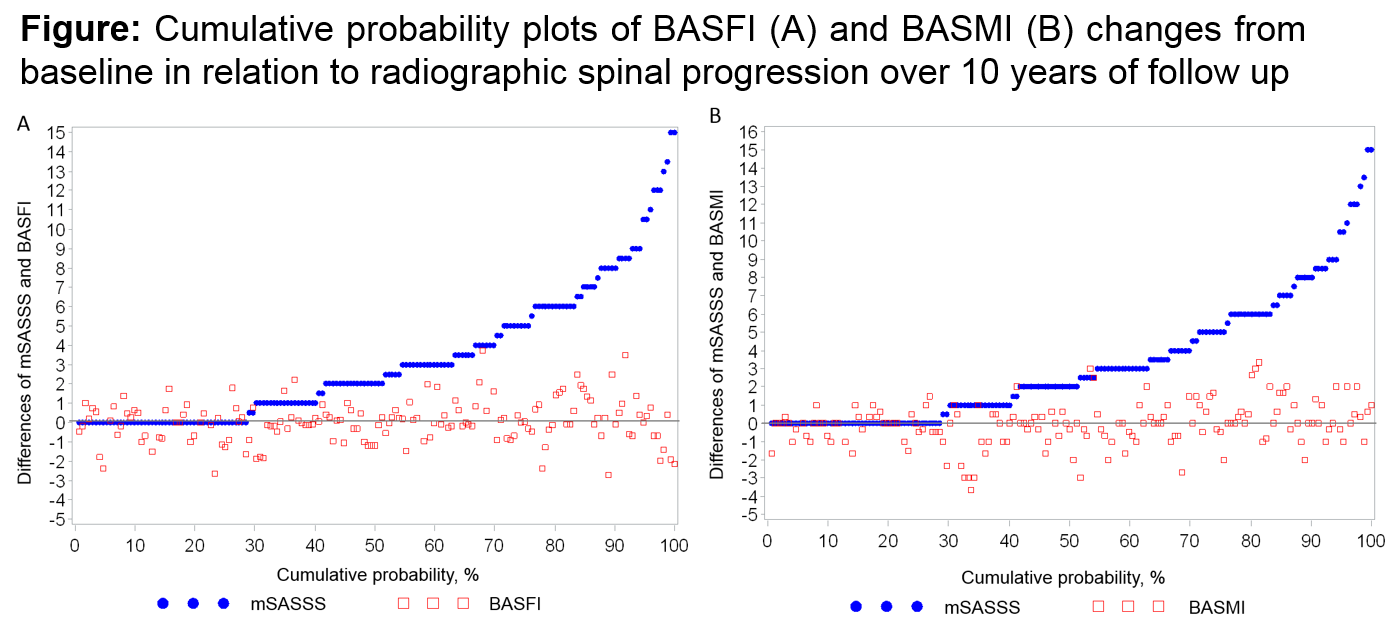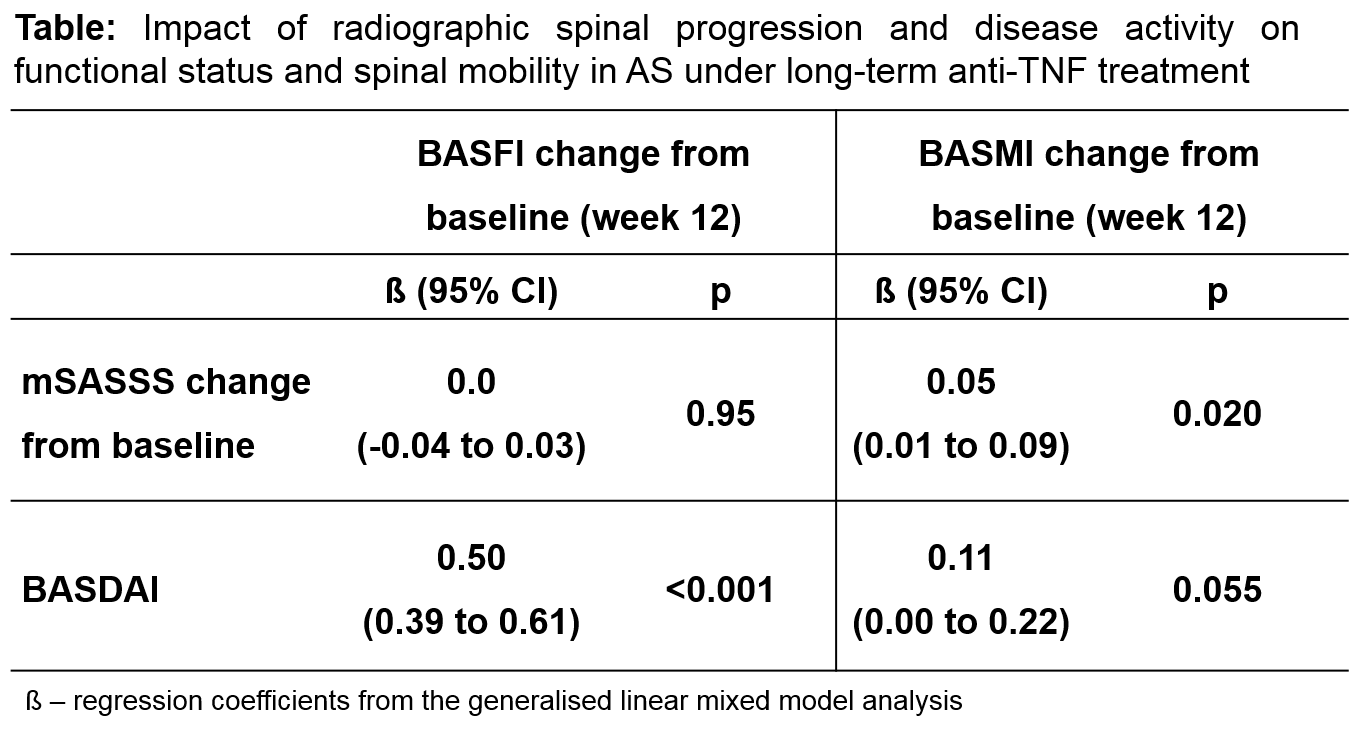Session Information
Date: Monday, November 9, 2015
Title: Spondylarthropathies and Psoriatic Arthritis - Comorbidities and Treatment Poster II
Session Type: ACR Poster Session B
Session Time: 9:00AM-11:00AM
Background/Purpose:
Impaired function and spinal
mobility in patients with ankylosing spondylitis (AS) can be
caused by both spinal inflammation and new bone formation. Anti-TNF
therapy has been shown to reduce inflammation but the influence
on radiographic progression is less clear. The aim of the study was to
investigate the impact of long-term (up to 10 years) anti-TNF therapy on
function and spinal mobility in relation to radiographic progression in the
spine in patients with AS.
Methods:
Altogether 60 patients with AS from two long-term trials with
TNF blockers (43 on infliximab and 17 on etanercept)
were included in this analysis based on availability of spinal x-rays performed at
baseline and at least at one following time-point (year 2, 4, 6, 8, 10) during
the follow-up. Spinal
radiographs (cervical and lumbar spine lateral views) were scored according to the modified
Stoke Ankylosing Spondylitis Spine Score (mSASSS) system by two readers (DP and
AF) not blinded for the time point. The functional status was assessed by means
of the Bath Ankylosing Spondylitis Functional Index (BASFI), spinal mobility –
by the Bath Ankylosing Spondylitis Metrology Index (BASMI, 0-10), and clinical
disease activity – by the Bath Ankylosing Spondylitis Disease Activity Index
(BASDAI).
Results:
Patients treated with infliximab and
etanercept had similar baseline characteristics with regards of age, gender,
HLA-B27 status, symptom duration, disease activity and baseline structural
damage that allowed pooling of the data. After the BASFI, BASMI, and BASDAI had
initially improved significantly in response to anti-TNF therapy these two
outcome parameters remained remarkably stable at low levels over 10 years in
those patients who remained on the drug over time despite the observed mean
increase of the mSASSS by 6 points. The cumulative
probability plots (figure) demonstrate no increase of BASFI and BASMI with
increasing mSASSS. In the multivariate analysis, there was no association between mSASSS change and BASFI change, while there was some impact
of the mSASSS change on BASMI change over time
(table). BASDAI demonstrated a strong association with functional status and,
to a lesser extent, with spinal mobility.
Conclusion:
Functional status in patients with
advanced AS remained stable during long-term anti-TNF therapy despite
radiographic progression. Under these conditions, the BASFI course correlated
strongly with BASDAI but not with the mSASSS. This might indicate that a good
control of inflammation is able to overweight the negative effect of structural
damage in the spine on the functional status in AS.
To cite this abstract in AMA style:
Poddubnyy D, Fedorova A, Listing J, Haibel H, Baraliakos X, Braun J, Sieper J. Good Control of Inflammation Counterbalances a Negative Impact of Radiographic Spinal Progression on Functional Status and Spinal Mobility in Patients with Ankylosing Spondylitis Treated with TNF Inhibitors [abstract]. Arthritis Rheumatol. 2015; 67 (suppl 10). https://acrabstracts.org/abstract/good-control-of-inflammation-counterbalances-a-negative-impact-of-radiographic-spinal-progression-on-functional-status-and-spinal-mobility-in-patients-with-ankylosing-spondylitis-treated-with-tnf-inhi/. Accessed .« Back to 2015 ACR/ARHP Annual Meeting
ACR Meeting Abstracts - https://acrabstracts.org/abstract/good-control-of-inflammation-counterbalances-a-negative-impact-of-radiographic-spinal-progression-on-functional-status-and-spinal-mobility-in-patients-with-ankylosing-spondylitis-treated-with-tnf-inhi/


